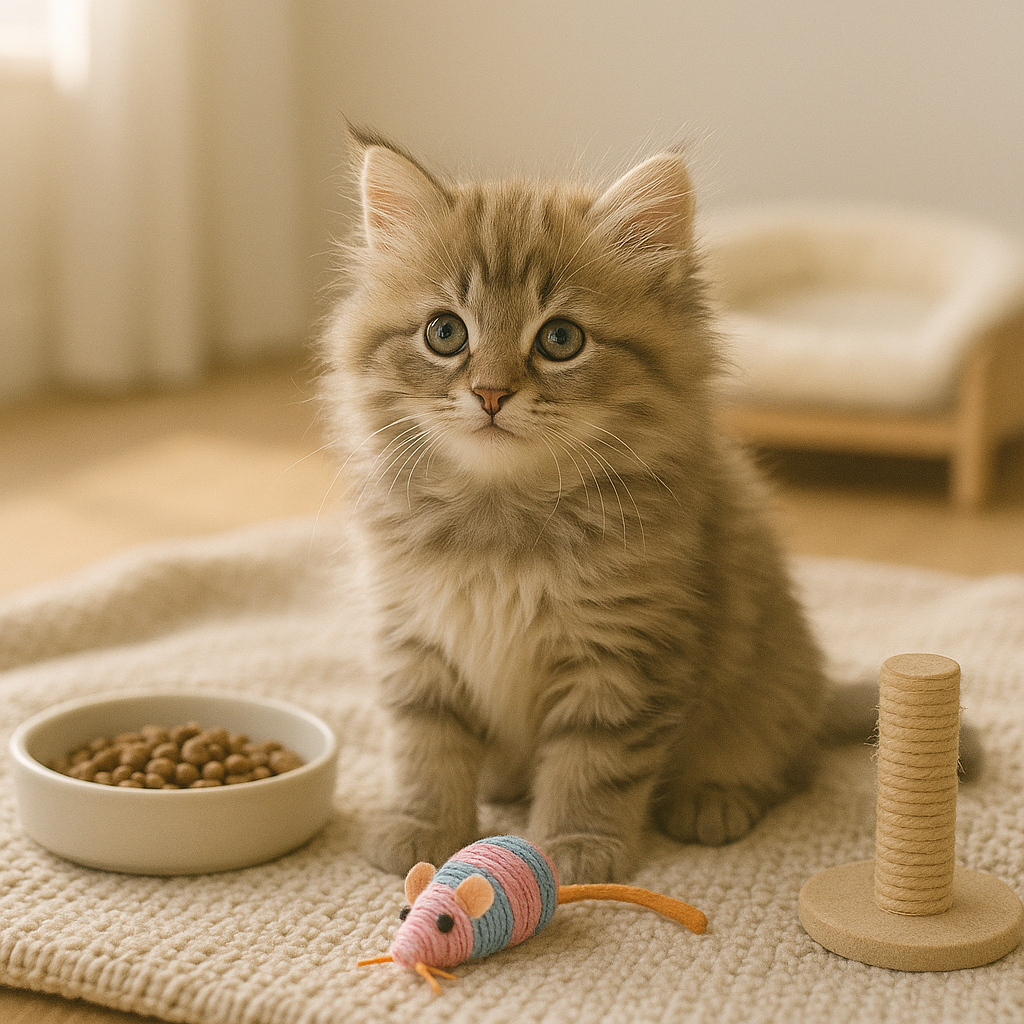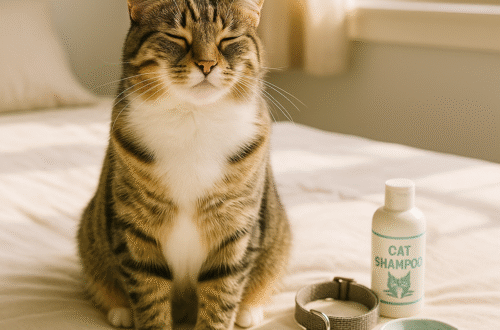Bringing a kitten into your home is an exciting, heartwarming experience. That tiny bundle of fur will quickly capture your heart but they also depend entirely on you for their comfort, safety, and health. Whether you’ve adopted from a shelter or welcomed a stray into your life, the first few weeks are crucial for building trust and helping your new feline friend settle in.
In this guide, you’ll find practical, easy-to-follow tips on feeding, litter training, grooming, playtime, and health so your kitten grows into a confident, happy cat.

Preparing for Your Kitten’s Arrival
Before your kitten steps paw into your home, it’s important to set up a safe and welcoming environment. A prepared space will help them feel secure and prevent unnecessary stress.
1. Create a Safe Space
Designate a quiet corner or a small room where your kitten can relax during their first days. Include a soft bed, food and water bowls, and a litter box nearby. Too much space at once can be overwhelming for a tiny kitten.
2. Gather Essential Supplies
Here’s a quick checklist for your kitten starter kit:
- Litter box & litter
- Soft bed or blanket
- Food & water bowls (preferably shallow ceramic or stainless steel)
- Kitten food (wet or dry, age-appropriate)
- Scratching post
- Interactive toys (feather wands, balls, plush mice)
3. Kitten-Proof Your Home
Kittens are curious explorers. Remove or secure hazards such as:
- Electrical cords
- Small objects they might swallow
- Toxic plants (like lilies, poinsettias, aloe vera)
- Cleaning chemicals
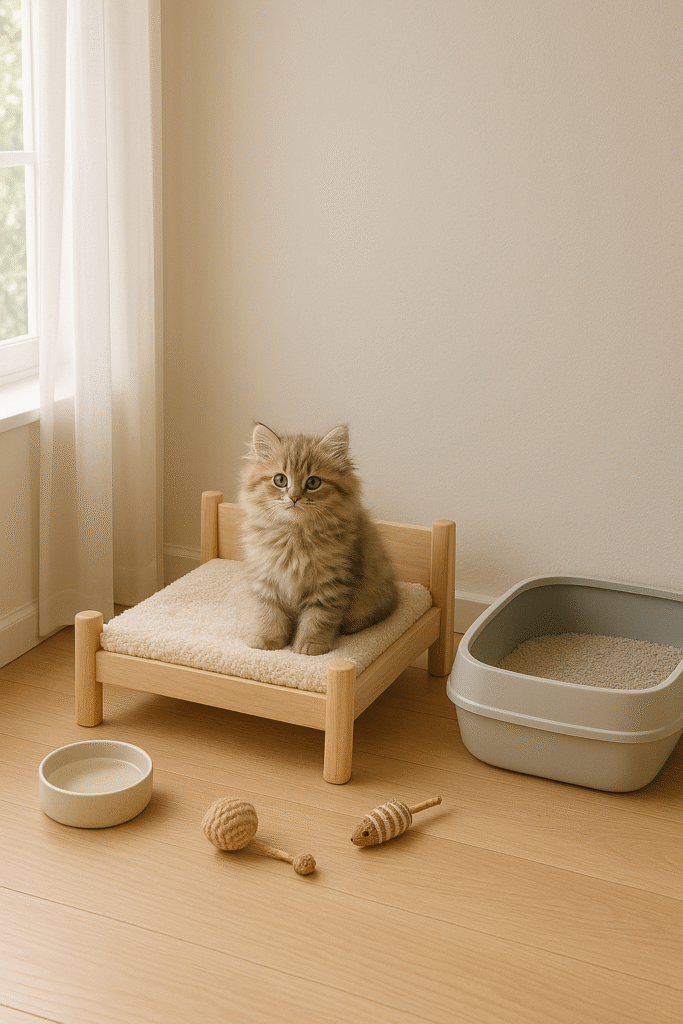
Feeding Your Kitten the Right Way
A kitten’s diet plays a huge role in their growth, energy, and long-term health. Since they grow quickly in their first year, giving them the right nutrition from day one is essential.
1. Choose Kitten-Specific Food
Kittens need more protein, fat, and calories than adult cats. Look for high-quality kitten food, either wet, dry, or a combination. Wet food helps keep them hydrated, while dry food supports dental health. Avoid feeding only adult cat food it doesn’t meet their nutritional needs.
2. Follow an Age-Appropriate Feeding Schedule
- 0–4 weeks: Mother’s milk or kitten formula (if orphaned)
- 4–8 weeks: Transition to soft, wet kitten food
- 2–6 months: Feed 3–4 small meals a day
- 6–12 months: 2–3 meals a day before switching to adult cat food
3. Provide Fresh Water at All Times
Keep a shallow bowl of clean water available. Change it at least twice daily. Avoid giving milk to kittens many cats are lactose intolerant, and it can cause stomach upset.
4. Foods to Avoid
Some human foods are toxic to kittens, including:
- Chocolate
- Onions & garlic
- Grapes & raisins
- Raw fish & bones
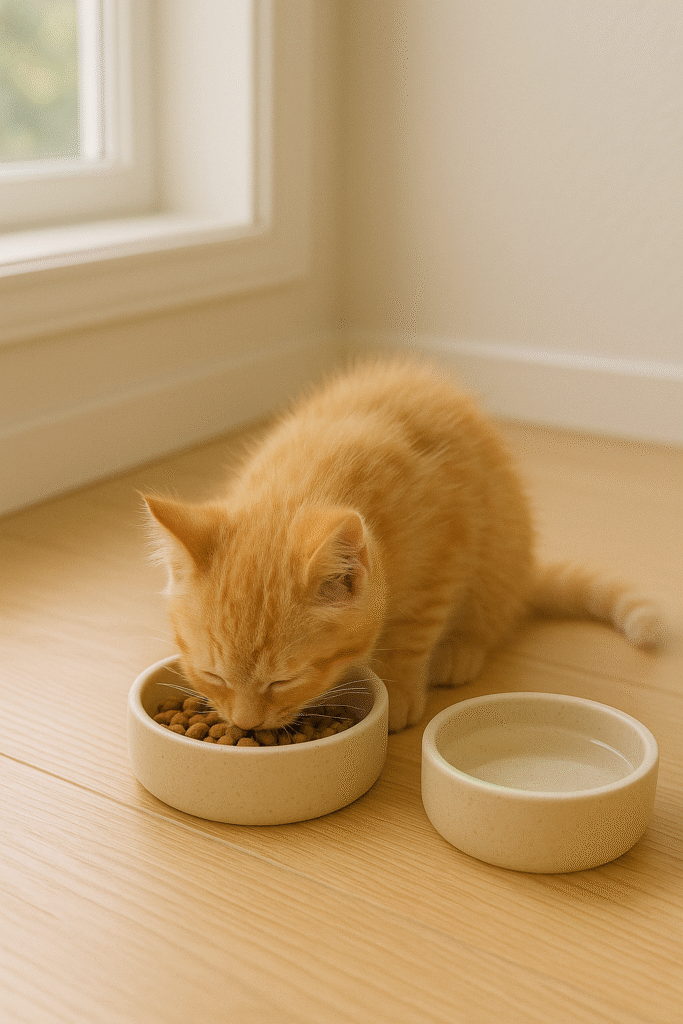
Litter Training Made Easy
Litter training a kitten is usually easier than most people think cats naturally prefer a clean, sandy spot to do their business. All you need is the right setup and a little patience.
1. Pick the Right Litter Box
Choose a box that’s shallow enough for your kitten to climb in and out easily. For very young kittens, a small open tray works best.
2. Choose the Best Litter
Unscented, clumping litter is ideal for training. Strong scents can discourage your kitten from using the box. Avoid crystal or pellet types at first they can be uncomfortable for tiny paws.
3. Step-by-Step Training
- Place your kitten in the litter box after meals, naps, and play sessions.
- If they start sniffing or scratching the floor, gently guide them to the box.
- Reward them with gentle praise when they use it correctly.
4. Keep It Clean
Scoop the litter daily and wash the box with mild soap weekly. Cats are much more likely to use a clean box.
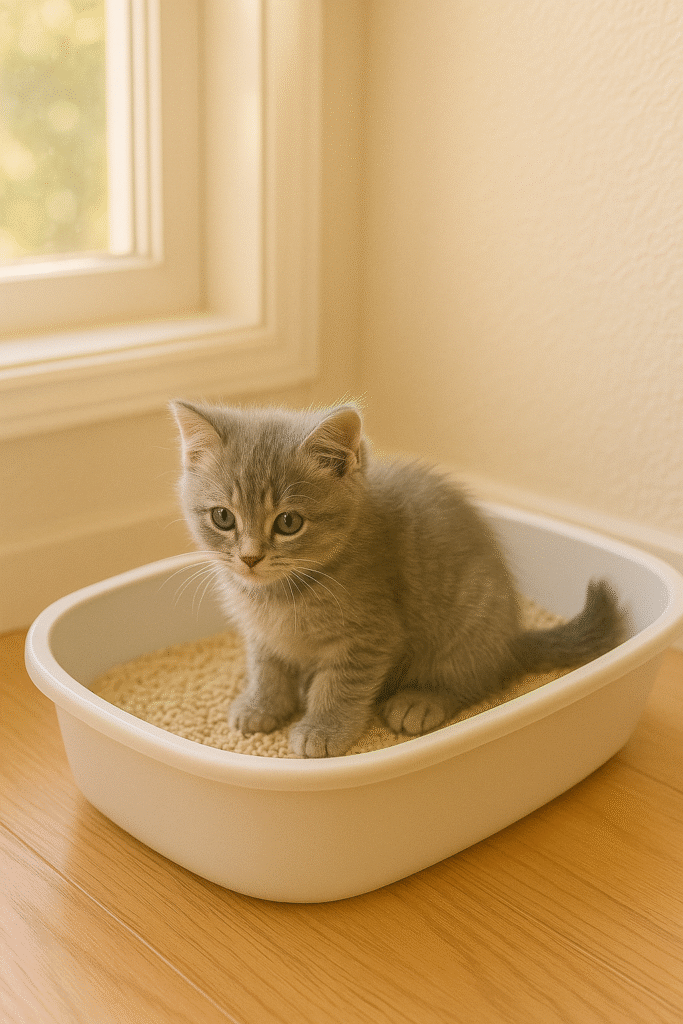
Keeping Your Kitten Healthy
A healthy kitten is an active, playful, and curious little ball of energy. Regular vet care and early preventive steps will help your kitten grow strong and stay protected from illnesses.
1. Schedule the First Vet Visit
Within the first week of bringing your kitten home, book a vet appointment. This checkup will confirm their overall health, check for parasites, and set up a vaccination schedule.
2. Essential Vaccinations & Deworming
Your vet will recommend vaccines against common feline diseases like:
- Feline distemper (panleukopenia)
- Feline calicivirus
- Feline herpesvirus
- Rabies (depending on your region)
Also, kittens often need deworming treatments every few weeks until about 12 weeks old.
3. Flea & Tick Prevention
Even indoor kittens can pick up fleas or ticks. Ask your vet about safe preventive treatments for your kitten’s age and weight.
4. Watch for Signs of Illness
Contact your vet if you notice:
- Loss of appetite
- Persistent sneezing or coughing
- Diarrhea or vomiting
- Lethargy or sudden behavior changes
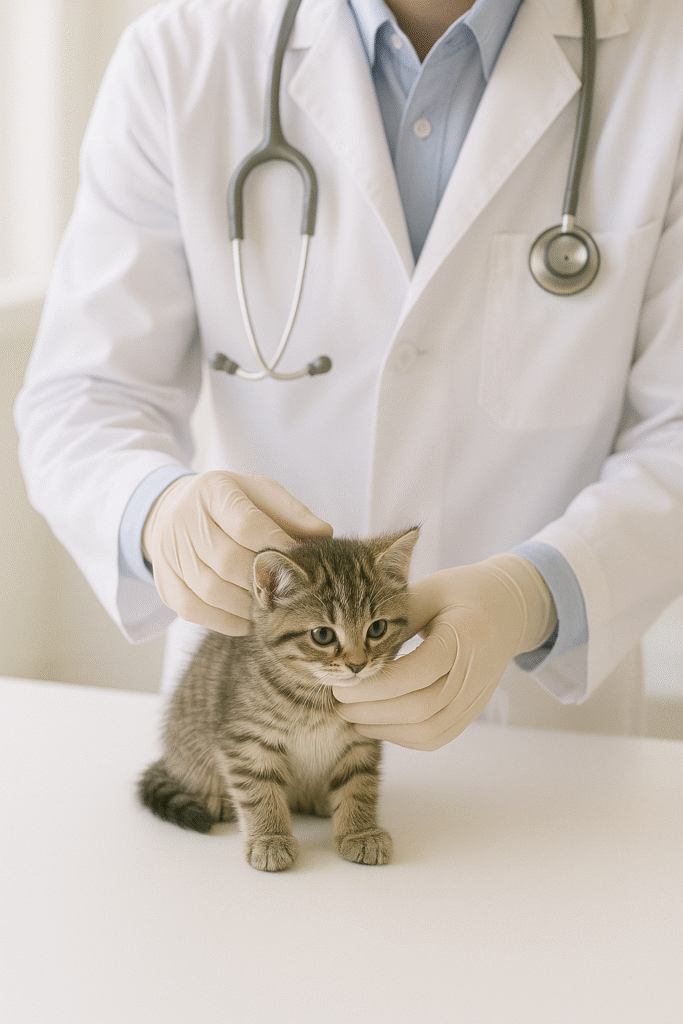
Grooming Your Kitten
Grooming is more than just keeping your kitten looking cute it’s also a bonding experience and an important part of their health routine.
1. Brushing
Start brushing early so your kitten gets used to the sensation. Short-haired kittens may only need brushing once a week, while long-haired breeds benefit from daily grooming to prevent mats and tangles.
2. Bathing
Most kittens don’t need frequent baths, but occasional gentle washing can help if they get into something messy. Use a kitten-safe shampoo and lukewarm water, and keep the bath quick.
3. Nail Trimming
Trim nails every 2–3 weeks. Use small pet nail clippers and gently press the paw to extend the claw, trimming only the sharp tip to avoid hitting the quick.
4. Ear & Eye Care
Wipe ears with a soft, damp cloth if you see dirt, and check eyes for any discharge. Always use gentle movements so your kitten feels safe.
